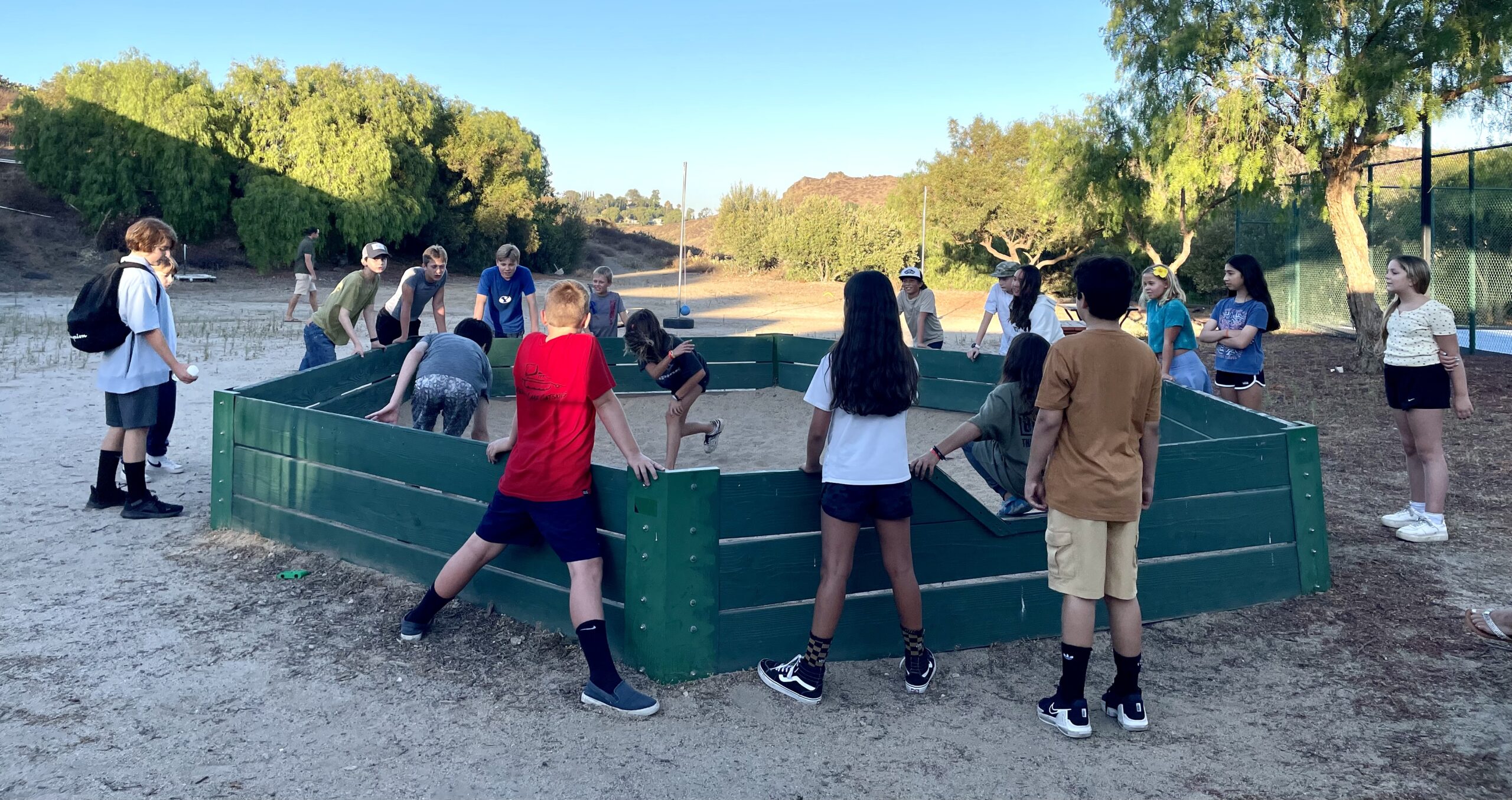
OSA’s Commitment to a Healthier Childhood & Our Tech Policy
Starting in 2024-2025, OSA will be a phone-free zone. First, the specifics, but I recommend you read the rationale below and see the resources at the end. Most of the recommendations for our policy were taken from Jonathan Haidt’s groundbreaking research detailed in his book, The Anxious Generation, which we recommend all parents read.
Tech Policy at One Spark Academy
- Phones are not to be used by children on the OSA campus, at OSA events, or on field trips.
- If phones are brought, they are to be OFF and in backpacks the entirety of the day, including before and after class.
- Exceptions can be made if students need to call parents or a trusted adult. Please make pick up arrangements at drop off.
- Exceptions can be made for medical or learning reasons. Please let us know in advance.
- Smart watches can be distracting, although are not as easy to use for personal entertainment. We recommend students have a regular watch.
- Laptops and iPads may be used in class for instructional purposes only.
- Adults are to model appropriate smartphone etiquette at all times on campus, at OSA events, and on field trips.
Recommended at Home
- Delay the purchase of smartphones until your child is ready, which is often much later than you think.
- Set time limits and scheduled use for all devices, lessening up as children meet your family benchmarks for independent practice.
- Supervise your children when they first get any new device.
- Ensure that bedrooms are device-free after 8:00 PM.
- Provide MORE unsupervised play without devices, so your child builds independence and trust.
- Organize MORE device-free outings, with peers who also adhere to device-free outings (visits to the mall, sleepovers, park dates— with devices left at home or in vehicles).
- Plan for device-free family time.
- No devices on the dinner table or during meal time.
- If children have phones, wait until they get home from class before they use them. Use driving time to and from class to debrief about the day, practice emotional downtime, and engage in social connection. This will take practice.
- If children have phones, no social media until age 16. (Social media is especially detrimental for adolescent girls. Refer to multiple chapters in the book, The Anxious Generation, or see the research here.)
- Talk with the parents of your child’s friends to make collective action agreements.
- Watch adult use of smartphones: Many adults admit they are addicted to their smartphones, checking them multiple times an hour, not being able to be present in discussions without them, using them while driving, etc. As adults, we must model what we want to see in our children and seek assistance if we need support.
The Rationale
OSA has always been phone-free during class time, but that didn’t eliminate the concerns and mini battles. Last year, we asked students to leave phones off and in backpacks (not in pockets, where pings, notifications, and other distractions aren’t lessened, and certainly not in hands while walking around). That made a big difference, but it didn’t quell students’ desires to be on their phones before and after class.
This summer, the OSA team did a deep dive into the detrimental effects of smartphones in the hands of children. We read Jonathan Haidt’s book, The Anxious Generation, and invited all of our families to read with us. What we learned (added to what we have observed and already knew), left us with no doubt that phones have no place in school, especially before high school. In fact, the research has convinced us that most children should NOT have smartphones before high school, and ideally not before age 16. The vast majority of students do not have the impulse control, decision-making maturity, and understanding to resist the pull that smartphones provide. The prefrontal cortex, the part of the brain which is last to develop, is the “personality center”; this cortical region makes us uniquely human. It is where we process moment-to-moment input from our surroundings, compare that input to past experiences, and then react to them (cited here). Between ages 9-14, children are in a moldable phase where habits can become “cemented”. And, it is during this time that social media, smartphone applications, and the Internet in general are particularly dangerous for children to navigate on their own. Virtual engagement (virtual feedback, virtual friends, dopamine hits) can easily supersede the necessary skill-building that comes from human engagement, active play, and in-real-life (IRL) risk taking.
Social media and gaming applications are actually designed to hook students at younger and younger ages. This makes phone addiction a very real threat. Since around 2012, when social media and the “like” button became ubiquitous, mental health in adolescents drastically declined. Social pressure has not helped. Most parents do not want to get their child a phone as early as children demand them. But when a child comes home and says, “I’m the only one without a phone”, it’s hard to battle that. This is why collective action is necessary. Collective action is when a group (family, school, or peer group) all engages in a similar set of norms. OSA will be a space for collective action.
We acknowledge that this will make some things harder. Children will need to write down phone numbers for peers. Parents will need to call the teachers more. Making after school plans will be a hassle if not done before class. Not listening to one’s own music during study sessions will be a bummer. Not being able to show friends that funny TikTok video will be frustrating. Not having super easy access to the Internet when they need a question answered immediately or to get an idea for art class will require longer processing time. The list of challenges goes on. Still, the net negatives of the constant distraction of smartphones, and the way they create more social pressure for kids who don’t have them, far outweigh the positives. The research is overwhelmingly clear: smartphones are not good for children.
Reclaiming Childhood
Play-based childhoods, which allow for healthy risk-taking and age-appropriate independence (two necessary ingredients for learning and growth), are critical for children to learn how to engage with others, how to resolve conflict, how to take turns, and how to grow confidently. But the addiction of smartphones has led to phone-based childhoods, which nearly eliminate healthy patterns of communication, relationship building, healthy risk-taking, and the development of confidence. Play-based childhoods build upon “discovery mode”, whereby children are curious and want to fly. People who live in discovery mode often have more friends (IRL), try more new things, are adventurous, display confidence, and are often more successful in school and work. Phone-based childhoods, by contrast, create a state of “defend mode”. People who go through life in defend mode are more anxious and defensive. Those in defend mode are often scared to try new things or push themselves, and are often more socially isolated – even if they have a lot of virtual friends. Those in defend mode tend to see new ideas, situations, and people as potential threats rather than opportunities. Although fear is a huge obstacle to curiosity and growth in children, it affects adults, too. The non-stop news cycle we adults have become conditioned to often elevates the fear we have in the real world. Violence, threats, horrible happenings often overshadow the reality that most awful things are NOT happening to most of us most of the time. In fact, the real world IS much SAFER than we have come to believe, while the virtual world is filled with danger, especially for children. In fact, that is where the most predators reside. Besides the near constant exposure to attention-grabbing imagery and ideas (violence, pornography, influencers, “likes”, and so much more), smartphones can be addictive, cause sleep deprivation in children, and fragment their/our attention. They tap in so deeply to our dopamine response that IRL (in real life) activities and associations become less appealing. Sadly, society has become far more overprotective in the real world, and more permissive in the virtual world. Children rarely get to do the independent things they were able to do a few decades ago, like walk to school or buy things at the store (without a parent there!) or be left at an amusement park without a device (!!) and have to meet parents at a time and place. And, while it is tempting to always know where and with whom our children are, at every second of the day, and require check ins multiple times a day, that level of surveillance erodes trust and the necessary natural risk-taking of childhood.
This is not good for any of us. We not only need to reclaim childhood, but we need to reclaim distraction-free human connection.
Smartphones are AMAZING and powerful tools. Smartphones are also, for the most part, ADULT TOOLS. They can be incredibly helpful for managing many daily tasks, family schedules, work needs, driving directions, and personal connections. But, giving smartphones to children is like giving children the keys to a Porsche before they know how to drive. BEFORE getting children get a smartphone, they need YEARS of practice making independent decisions. They should have been given multiple opportunities to prove they can set time limits on their other devices (gaming equipment, laptops, videos, etc.), manage their responsibilities in the home and with school, and they should be at least 14 (but ideally 16), when the most intense changes of early adolescence and puberty have passed. They should also be on the path to employment and should contribute to the cost.
We are determined to increase the joy of learning and reclaim a healthy childhood by limiting a reliance on (and a need for) smartphones in the hands of children. Join us in this endeavor.
Resources:
- Read: The Anxious Generation, by Jonathan Haidt
- Check out the Resource Library at The Anxious Generation
- Visit: Free-Range Kids for tips on how parents and schools can “let go and let grow”
- Get ideas for activities that promote your child’s independence and growth. Try one a week! The Let Grow Project
-Lori Peters, August 2024
